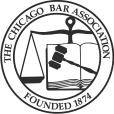
Hip fractures occur when the upper quarter of the femur (thigh-bone) breaks. Falls are the one of the most common causes of hip fractures. Those who suffer from osteoporosis, chronic stress, or cancer are at a greater risk of sustaining a hip fracture.
Older adults are more at risk of sustaining bone fractures due to age-related changes in the skeletal system. Over time, people tend to lose density and bone mass.
The Centers for Disease Control and Prevention reports that around 300,000 adults ages 65 and older are admitted to the hospital each year due to a hip fracture. More than 95 percent of those hip fractures are caused by falls.
How common are hip fractures in nursing homes?
According to McKnight's Long Term Care News, hip fracture rates among nursing home residents have been on the rise since dipping in 2013. They cited a study recently published in the Journal for Bone and Mineral Research.
The study examined fracture rates between 2007-2015. From 2007-2013, researchers saw a downward trend in falls leading to hip fractures in nursing homes. Since then, the rate of hip fractures among nursing home residents has gone up. In addition, researchers have discovered:
- A one-year mortality rate of 42 percent after fractures in 2007 and 2014
- A six-month mortality rate of 36 percent among residents with hip fractures
- Seventeen percent of ambulatory residents completely disabled
- Survivors of hip fractures may suffer bacterial infections and pressure sores
Are fall prevention strategies working in nursing homes?
According to Sarah D. Berry, M.D., MPH — an author in the study — fall prevention strategies have worked well in community settings, but have been less successful in nursing homes.
“In general, nursing home residents are older and sicker, with more cognitive and functional impairment than community-dwellers. One possible explanation for these high rates is the underutilization of medications to treat osteoporosis,” said Berry.
Berry has called for "widespread interventions to reduce the suffering associated with hip fractures in older adults."
Falls in nursing homes can be prevented when facility management and staff members implement the following:
- Daily exercise programs: The risk of falls can be mitigated by helping residents gain and maintain adequate strength and balance through exercise programs.
- Adequate mobility: Residents who sit or lie down for long periods of time are more prone to falls. Residents should be periodically moved to different positions or encouraged to get up and move on their own.
- Proper walking devices and footwear: Residents who are unable to walk without support must be provided with proper walking devices or canes. Properly fitted and comfortable footwear is also important to prevent falls.
- Keeping walkways clear: All walking areas should be clear of debris, slipping hazards and uneven surfaces.
- Ensure proper lighting and support: All walking areas should be well-lit and hand rails should be installed to help provide support when needed.
What if my loved one sustained a hip fracture in a nursing home?
If your loved one sustained a hip fracture after falling in a nursing home, it's important that you speak to an experienced Chicago nursing home abuse and neglect attorney.
The legal team at Keating Law Offices, P.C. can investigate the facility to see if it was adequately staffed, if the staff members fulfilled their duties, or if abuse or neglect occurred.
Our attorneys can gather critical, indisputable evidence to support your claim and help you get justice. We can also take on the insurance companies who represent the nursing homes. We can help maximize compensation for you and your loved one.
To find out more, contact us online and schedule your free, confidential consultation.







